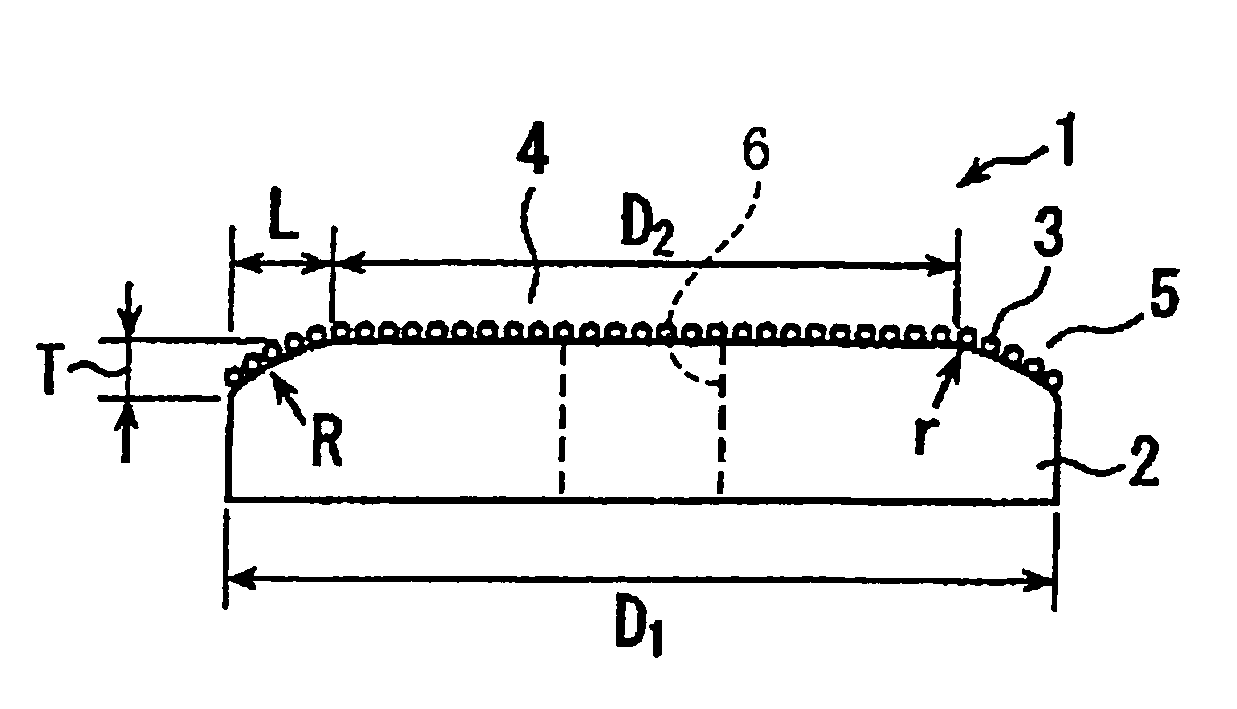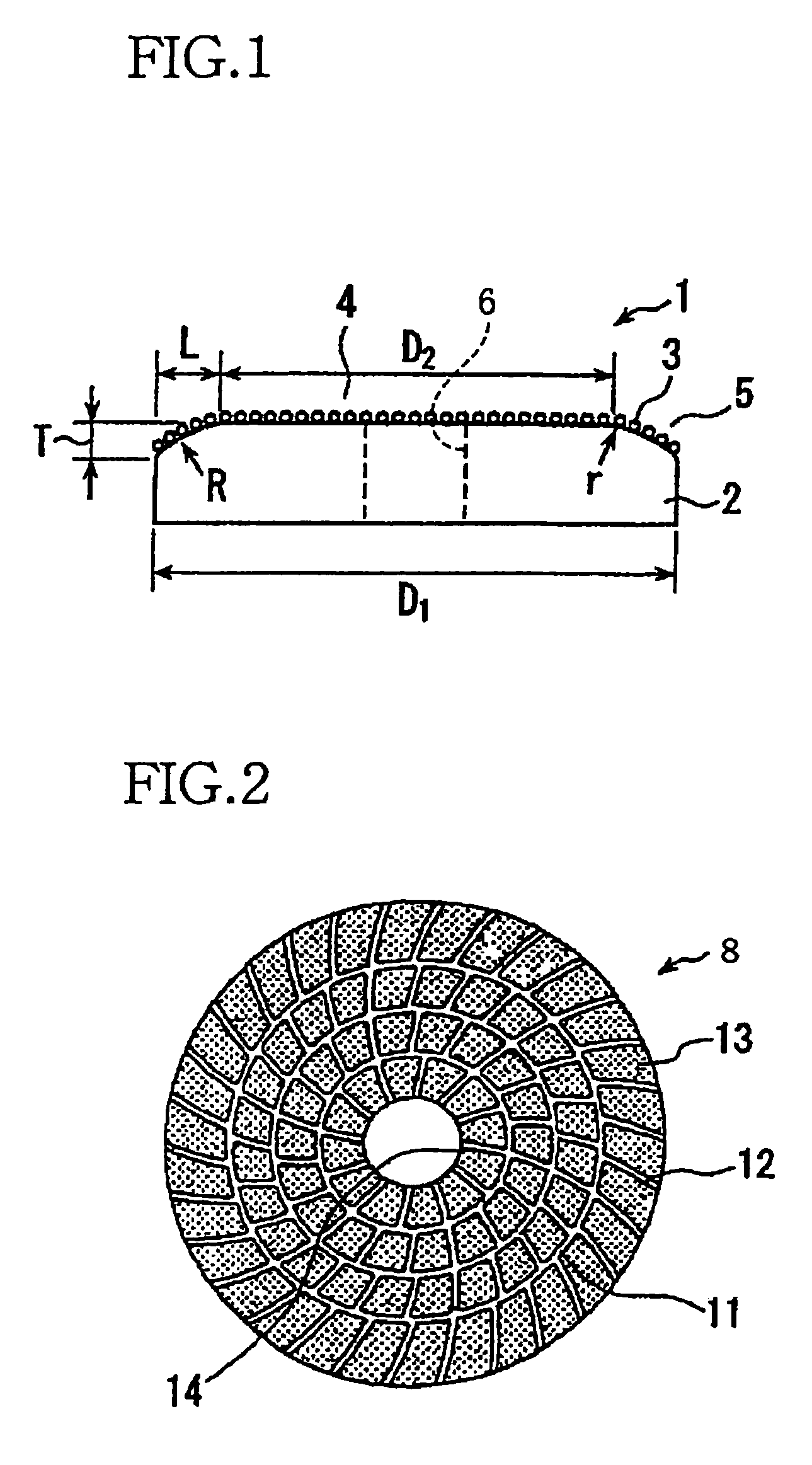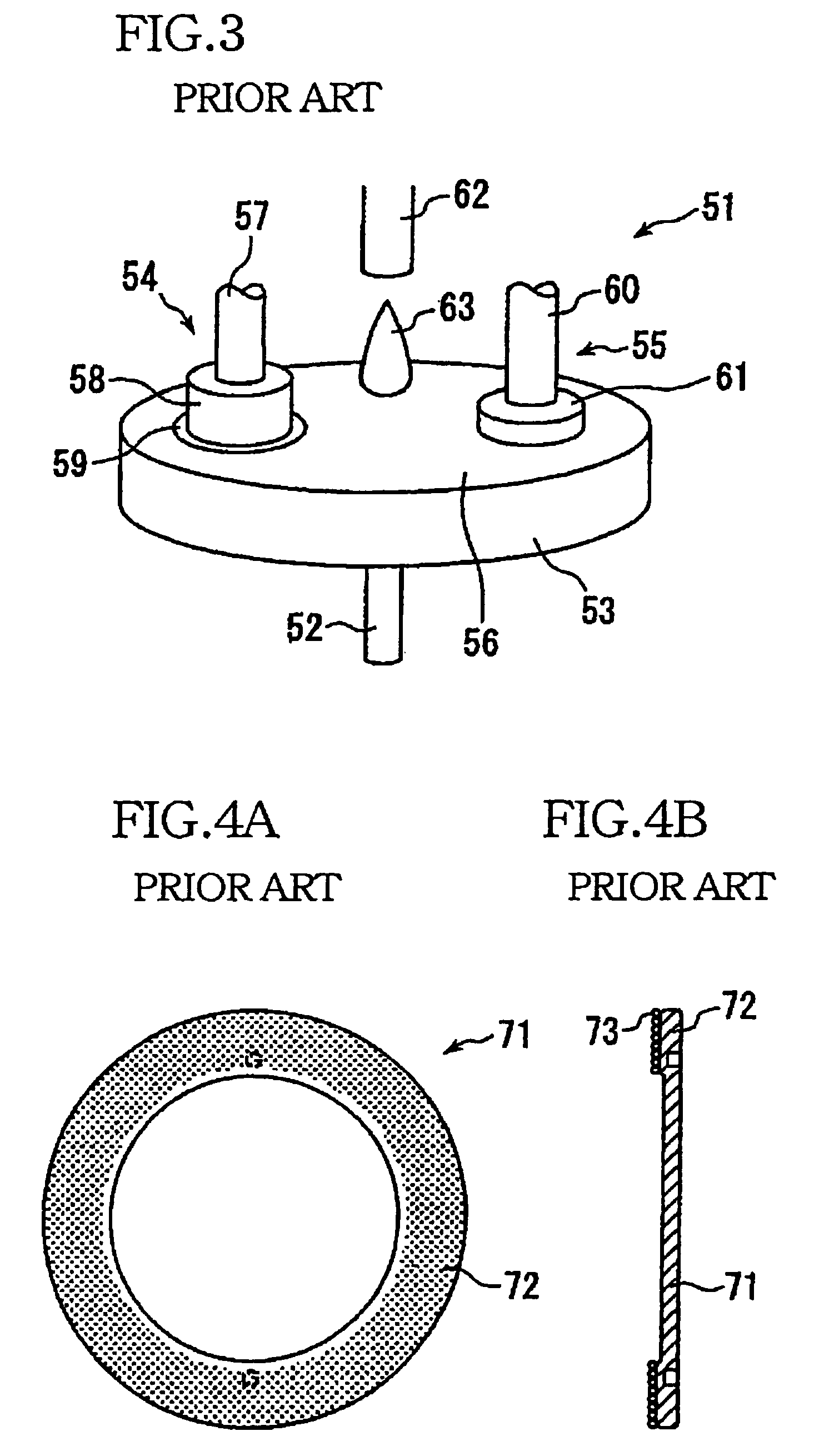CMP pad conditioner having working surface inclined in radially outer portion
a technology of working surface and conditioner, which is applied in the direction of gear-teeth manufacturing apparatus, abrasive surface conditioning devices, lapping machines, etc., can solve the problems of insufficient cleaning of pad surface, high spot on pad surface, and easy wear of the conditioning disk, so as to facilitate the evacuation of swarf and improve the condition performan
- Summary
- Abstract
- Description
- Claims
- Application Information
AI Technical Summary
Benefits of technology
Problems solved by technology
Method used
Image
Examples
first embodiment
[0037]Referring first to FIG. 1, there will be described a CMP pad conditioner in the form of a rotary conditioning disk 1 which is constructed according to the invention. This conditioning disk 1 includes: a disk-shaped metal substrate 2 having a working surface which is provided by one of its axially opposite end surfaces; and abrasive grains 3 which are fixed to an entirety of the working surface of the metal substrate 2. The metal substrate 2 includes a radially inner portion 4 and a radially outer portion 5 which is located radially outwardly of the radially inner portion 4. The disk-shaped metal substrate 2 is provided by an annular body, and a center hole 6 formed therethrough. The working surface in the radially inner portion 4 is parallel with a plane perpendicular to an axial direction of the metal substrate 2, such that a thickness of the radially inner portion 4 as measured in the axial direction is substantially constant. The working surface in the radially outer portio...
second embodiment
[0041]FIG. 2 shows another rotary conditioning disk 8, which is constructed according to the invention. This rotary conditioning disk 8 is substantially identical with the above-described rotary conditioning disk 1 except that an abrasive layer 13 is divided into a plurality of segments by a plurality of slots or grooves 11, 12 which are formed to extend along the working surface of the metal substrate 2.
[0042]Described specifically, the plurality of grooves 11, 12 includes first grooves 11 each of which extends substantially in a circumferential direction of the disk-shaped metal substrate 2, and second grooves 12 each of which extends in a direction away from a center hole 14 (farmed through the metal substrate 2) toward the periphery of the metal substrate 2. Each of the second grooves 12 is inclined with respect to a radial direction of the metal substrate 2, such that a radially outer end of each second groove 12 is positioned on a rear side of a radially inner end of the secon...
example 1
[0044 is identical with the above-described conditioning disk 1 of FIG. 1, wherein the ratio of the outside diameter of the radially inner portion of the metal substrate to the outside diameter of the metal substrate is 80%, while the difference amount between the thickness of the radially inner portion of the metal substrate and the thickness of the radially outer end of the metal substrate is equal to the average size of the abrasive grains.
[0045]Example 2 is identical with Example 1, except that the metal substrate further has the first and second grooves, as in the above-described conditioning disk 8 of FIG. 2.
[0046]Comparative Example 1 is identical with the above-described conventional conditioning disk shown in FIGS. 4A and 4B.
[0047]Comparative Example 2 is identical with the conditioning disk disclosed in JP-A-2001-113456, wherein super abrasive grains 75 each having obtuse cutting edges are fixed to a radially inside portion of the working surface of the disk-shaped metal s...
PUM
| Property | Measurement | Unit |
|---|---|---|
| diameter D2 | aaaaa | aaaaa |
| diameter D2 | aaaaa | aaaaa |
| diameter D2 | aaaaa | aaaaa |
Abstract
Description
Claims
Application Information
 Login to View More
Login to View More - R&D
- Intellectual Property
- Life Sciences
- Materials
- Tech Scout
- Unparalleled Data Quality
- Higher Quality Content
- 60% Fewer Hallucinations
Browse by: Latest US Patents, China's latest patents, Technical Efficacy Thesaurus, Application Domain, Technology Topic, Popular Technical Reports.
© 2025 PatSnap. All rights reserved.Legal|Privacy policy|Modern Slavery Act Transparency Statement|Sitemap|About US| Contact US: help@patsnap.com



